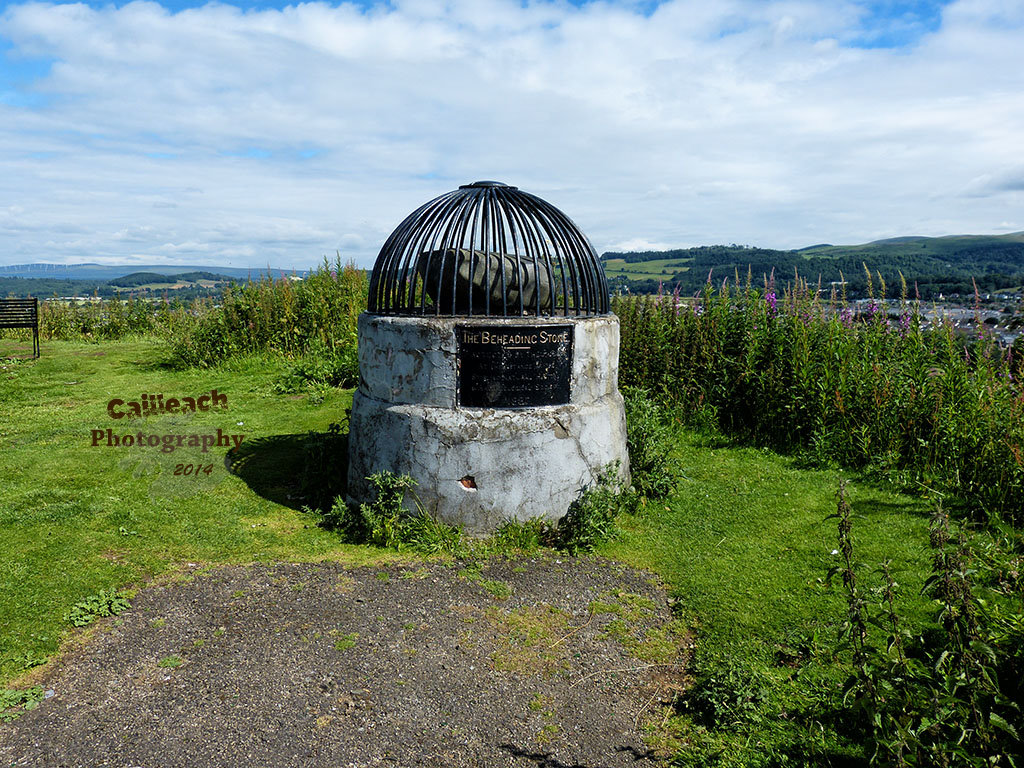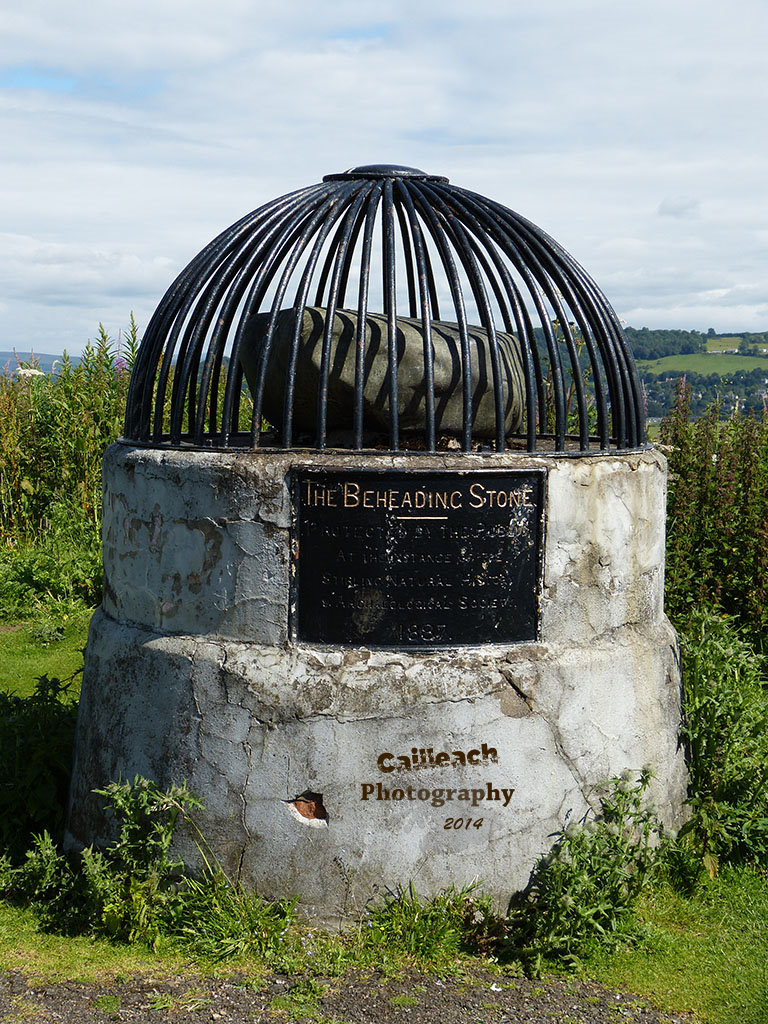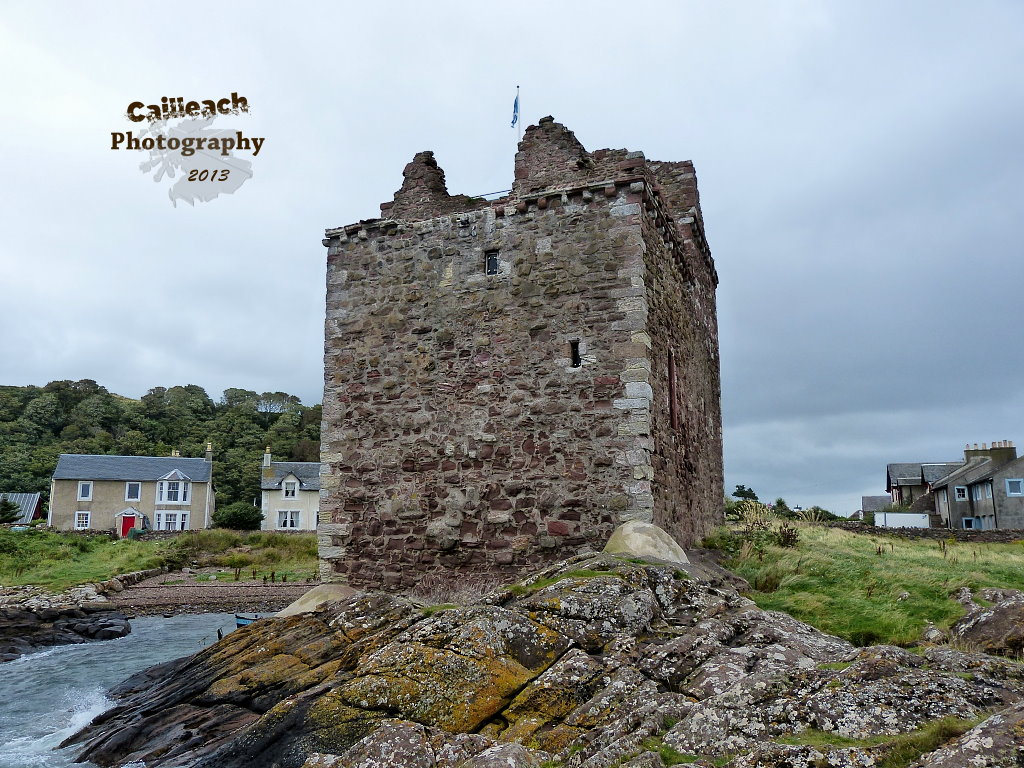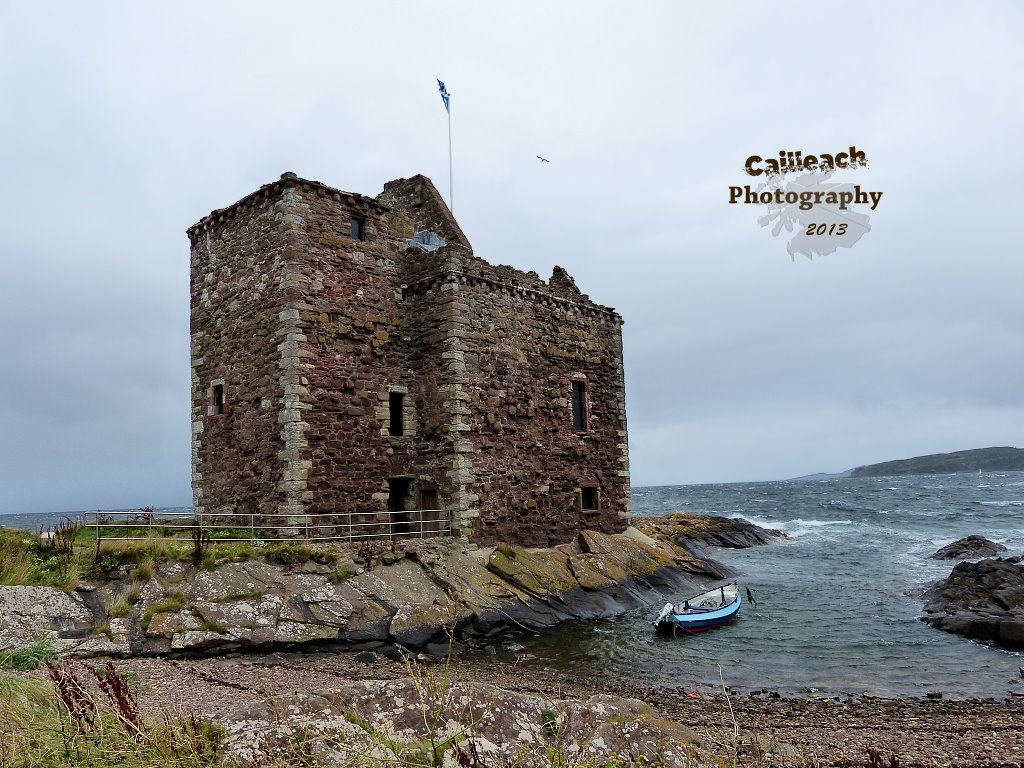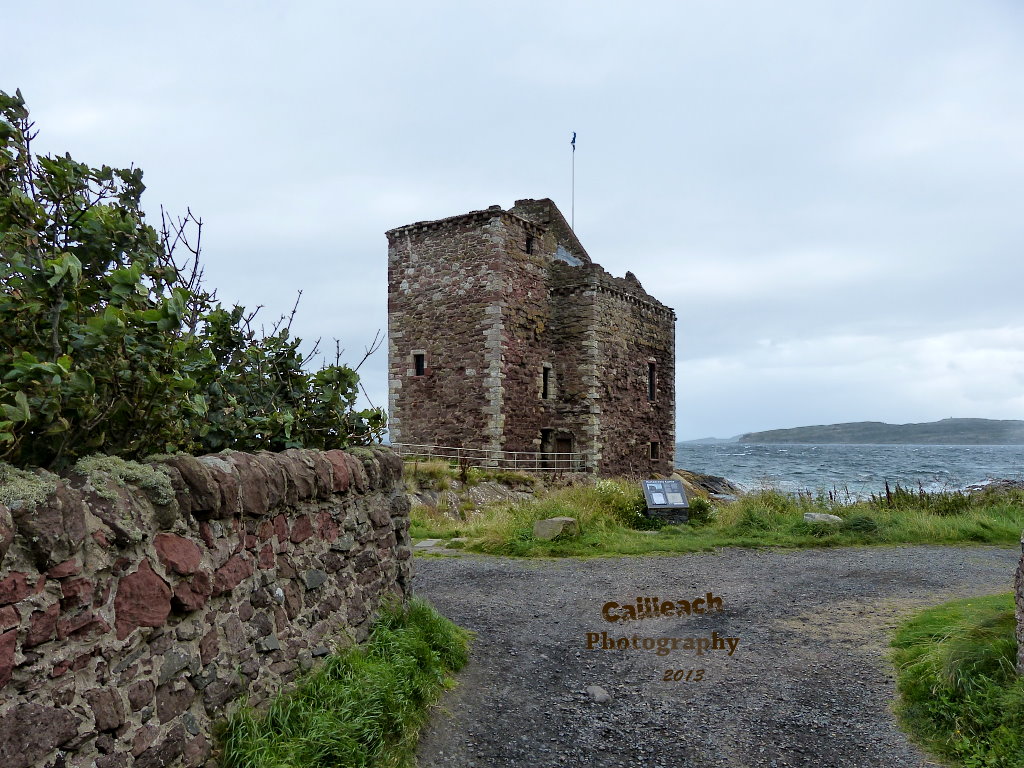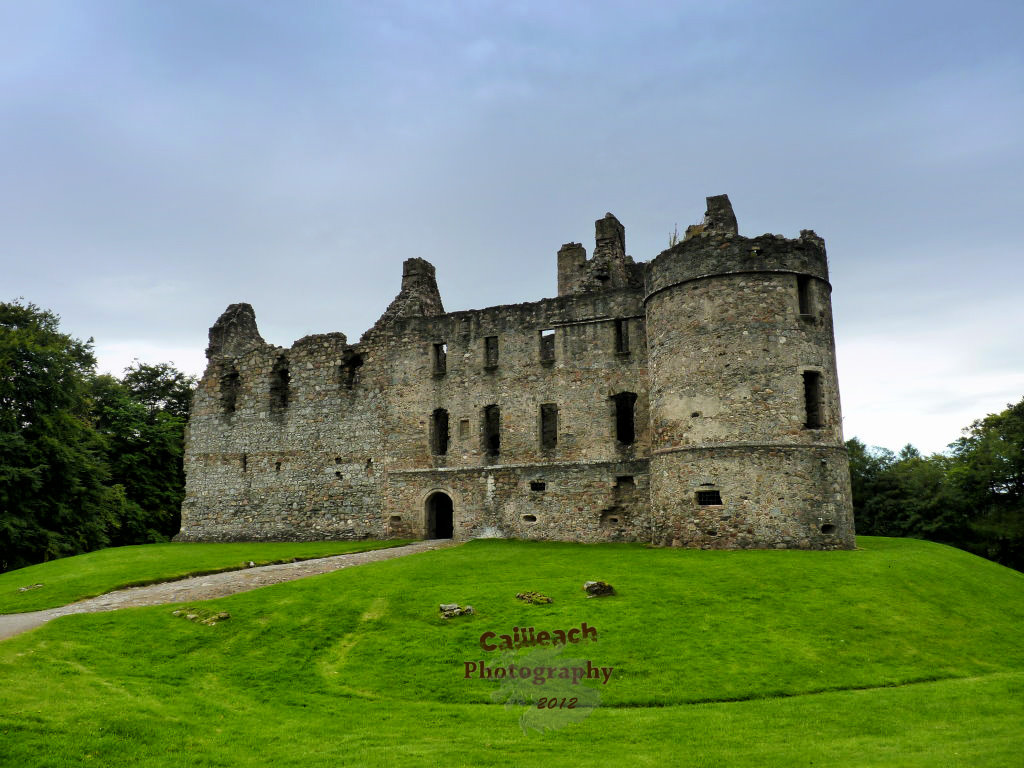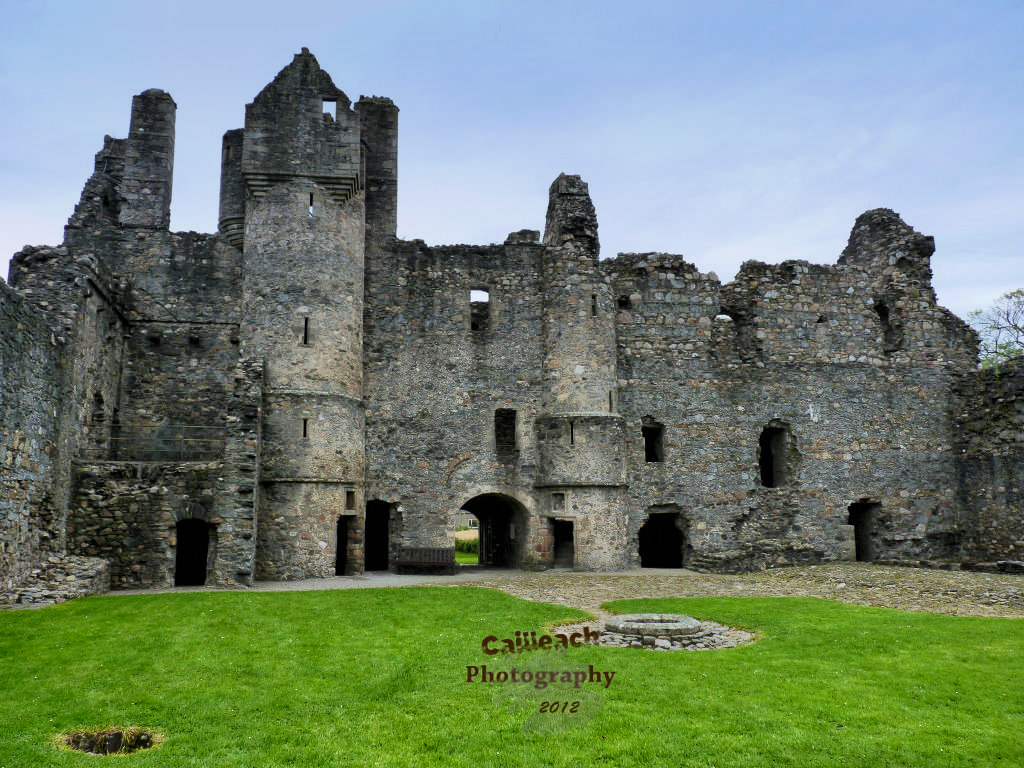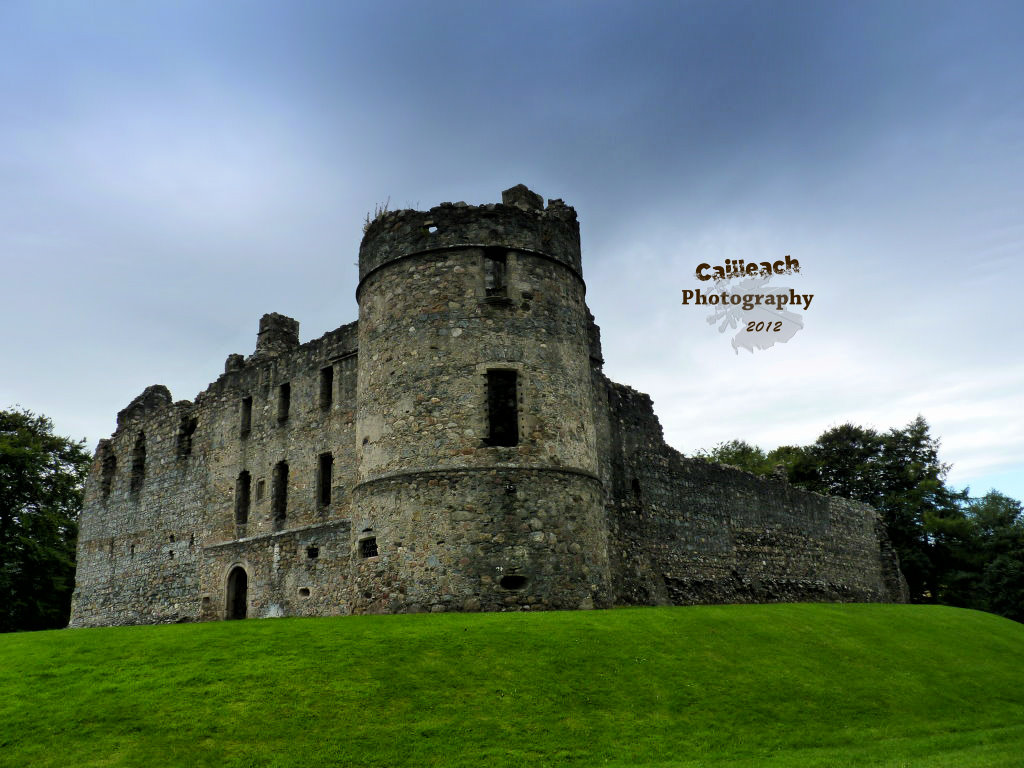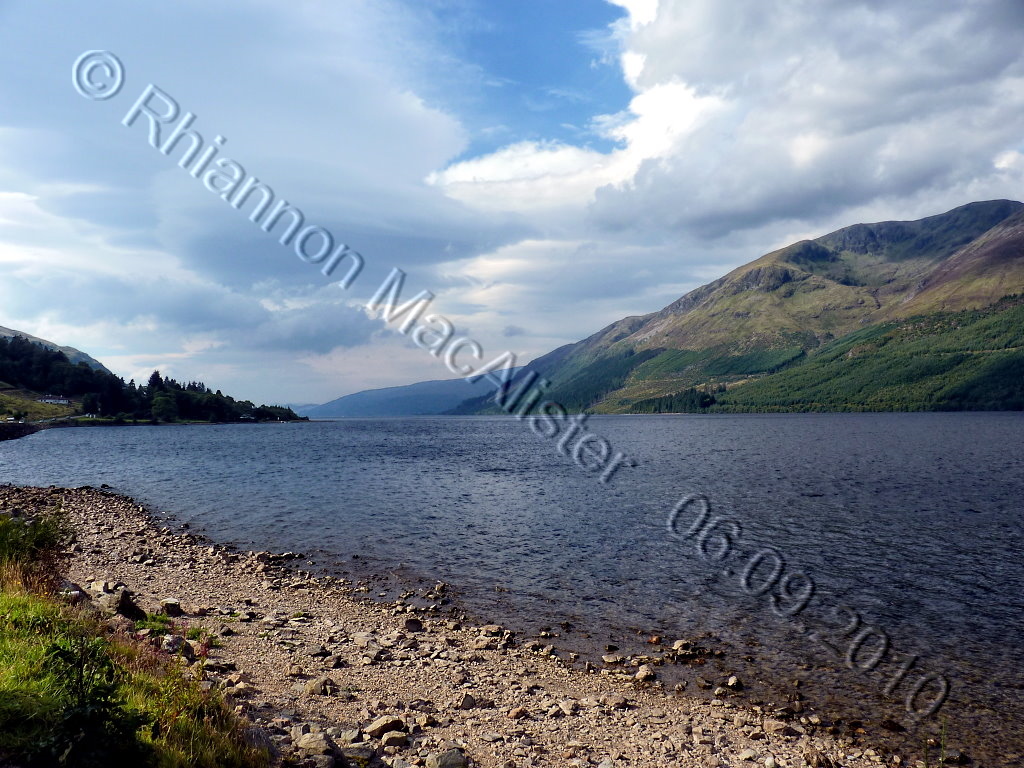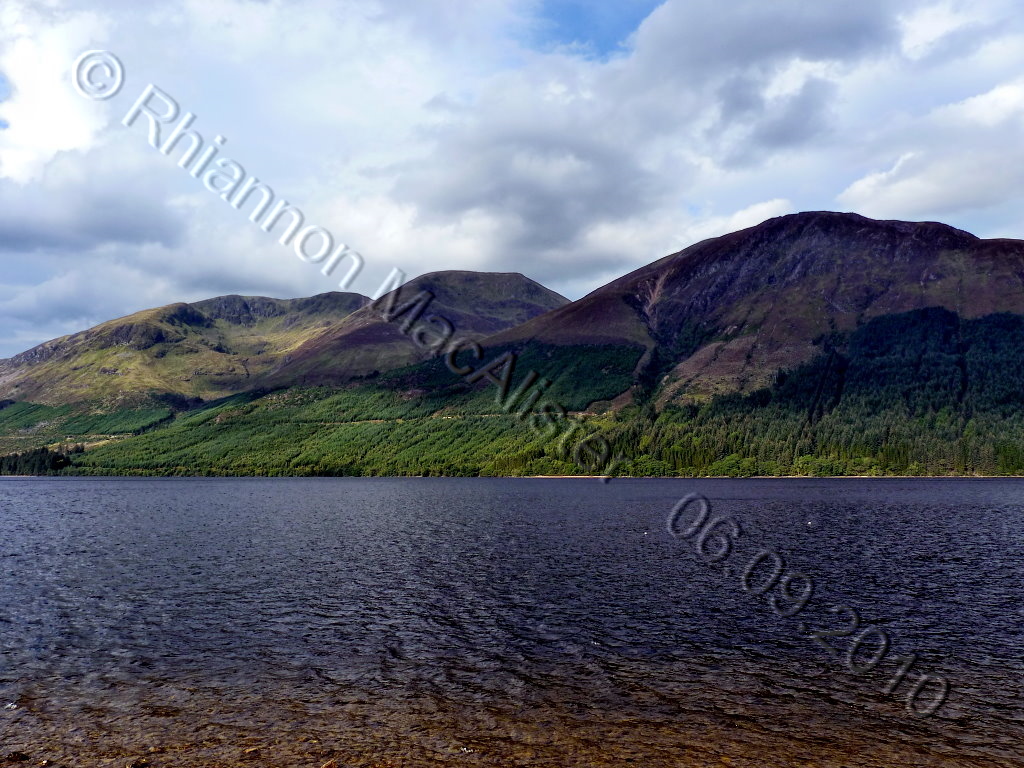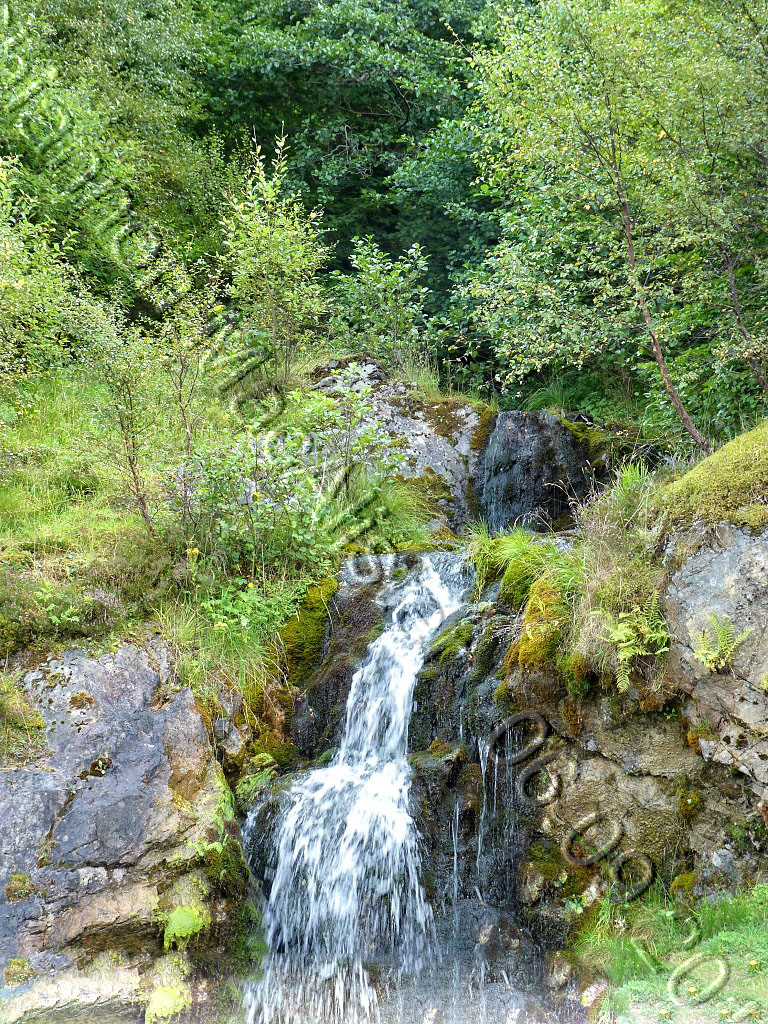According to legend, this lump of stone was used as a chopping block for executions during the 15th century. It is displayed beneath a canopy of iron bars on a plinth on Mote Hill overlooking Stirling Bridge, and can be reached via the Back Walk footpath from Lower Bridge Street.
******
Der Beheading Stone wurde im 15. Jahrhundert zur Bestrafung größerer Verbrechen und für die Hinrichtung wichtiger Persönlichkeiten genutzt. Er ist auf dem Mote Hill zu finden, einem kleinen Hügel, der früher auch unter dem Namen Heiding Hill bekannt war. Im Jahr 1425 wurden hier Murdoch, der Duke of Albany und Regent von Schottland, sowie zwei seiner Söhne exekutiert. Auch Murdoch’s Schwiegervater, der Earl of Lennox, wurde hier geköpft. Diese Hinrichtungen gingen von König James I. aus, der damit Rache für seine 18 Jahre andauernde Gefangenschaft in England nahm, die von Albany für seine Zwecke genutzt worden war.

